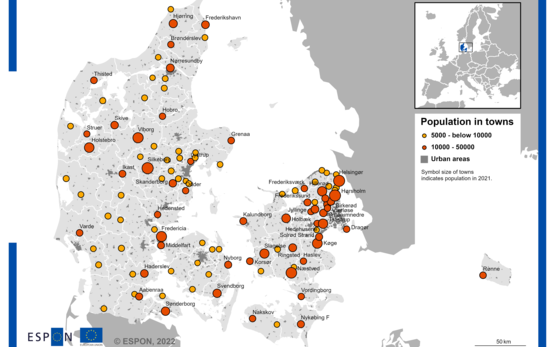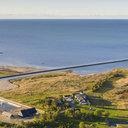Spotlight
-

Denmark, small and medium sized cities
Case Studies | August 25, 2022Looking for new activities and attractions to maintain vibrant town centres and develop appealing urban areas

Looking for new activities and attractions to maintain vibrant town centres and develop appealing urban areas

This report contributes to the Maritime Spatial Planning with two objectives: to undertake an analysis and characterization of the coastal and maritime planning and land-sea interactions from a mul

Article 174 of the TFEU states that: '’the Union shall aim at reducing disparities between the levels of development of the various regions and the backwardness of the least favoured regions.

This project, emanating from the targeted analysis project Maritime Spatial Planning and Land Sea Interactions (MSP-LSI) explores the potential spatial tensions between the deployment of renewable sources of blue energy (energy derived from our seas and oceans), with a particular focus on offshore wind energy, and other (potential) utilisations of the European seas.

This study analyses the implementation of an Integrated Territorial Investment (ITI) targeting small islands of the North Aegean Region in the 2014-2020 programming period, considering observed pat






An increasing share of renewable energy from some 10% in 2008 to 20% by 2020 forms a key energy and climate change objective of the European Council. At the same time have energy prices recently been rising again and the dependency on fossil fuels is increasing. In order to make an improvement in energy efficiency and to reach the above mentioned objective, energy supply and demand will have to turn more towards renewable energy sources in the future.

Scientific Dialogue on Cities, Rural Areas and Rising Energy Prices

This ESPON Report presents a synthesis of results from the major Applied Research projects undertaken by the ESPON 2013 Programme. It is also garnished with examples from Targeted Analyses delivered to stakeholders supporting the use of results by Member States, regions and cities.

This ESPON Report presents a synthesis of results from the major Applied Research projects undertaken by the ESPON 2013 Programme. It is also garnished with examples from Targeted Analyses delivered to stakeholders supporting the use of results by Member States, regions and cities.

This month ESPON shows the territorial trends 2001-2006 in potential accessibility by air. The concept of potential accessibility enables to measure how easy (i.e. travel time) a region can be reached from other European regions by a certain transport mode. High accessibility is often considered a prerequisite for economic development, for attracting investors, increasing employment and building networks of cities.

The reduction of emissions forms a key objective for the European Commission. The Europe 2020 Strategy confirms the 20-20-20 targets aiming at a reduction in EU greenhouse gas emissions of at least 20% below 1990 levels, 20% of EU energy consumption to come from renewable resources and a 20% reduction in primary energy use compared with projected levels, to be achieved by improving energy efficiency.

In the Spring European Council of 2000 the European Union decided the Lisbon Strategy. This strategy was aimed at making Europe the world´s leading knowledge-economy by 2010. In the meanwhile the global economic recession, has made responses to Europe´s major challenges – globalisation, climate change and an ageing population – even more urgent. The EU is currently discussing a new strategy for the period beyond 2010, the so called Europe 2020 Strategy, a successor to the Lisbon Strategy. This new common agenda should help the EU to recover from the crisis and to move the EU into a more sustainable, greener and more innovative economy where knowledge will be the key input.